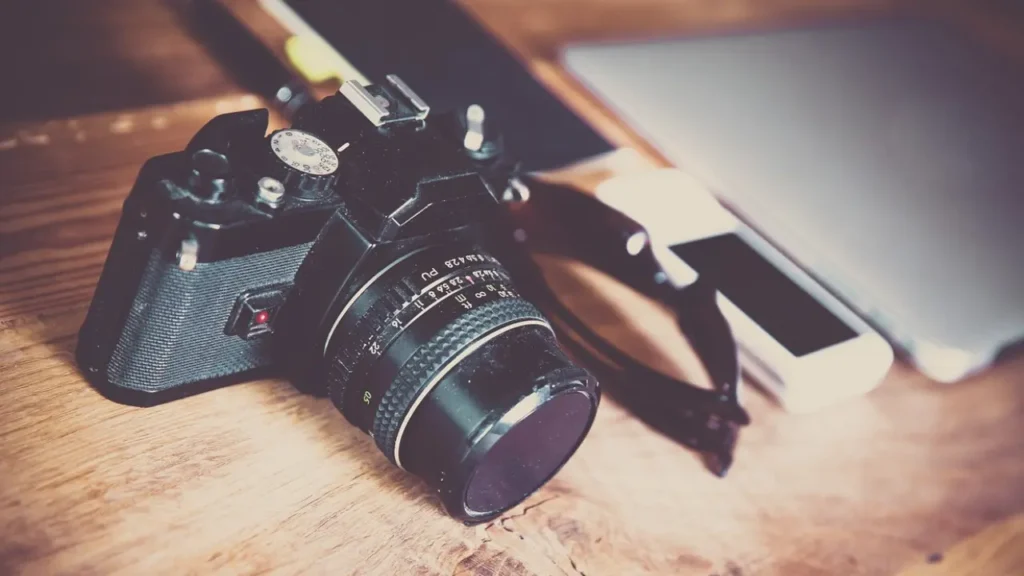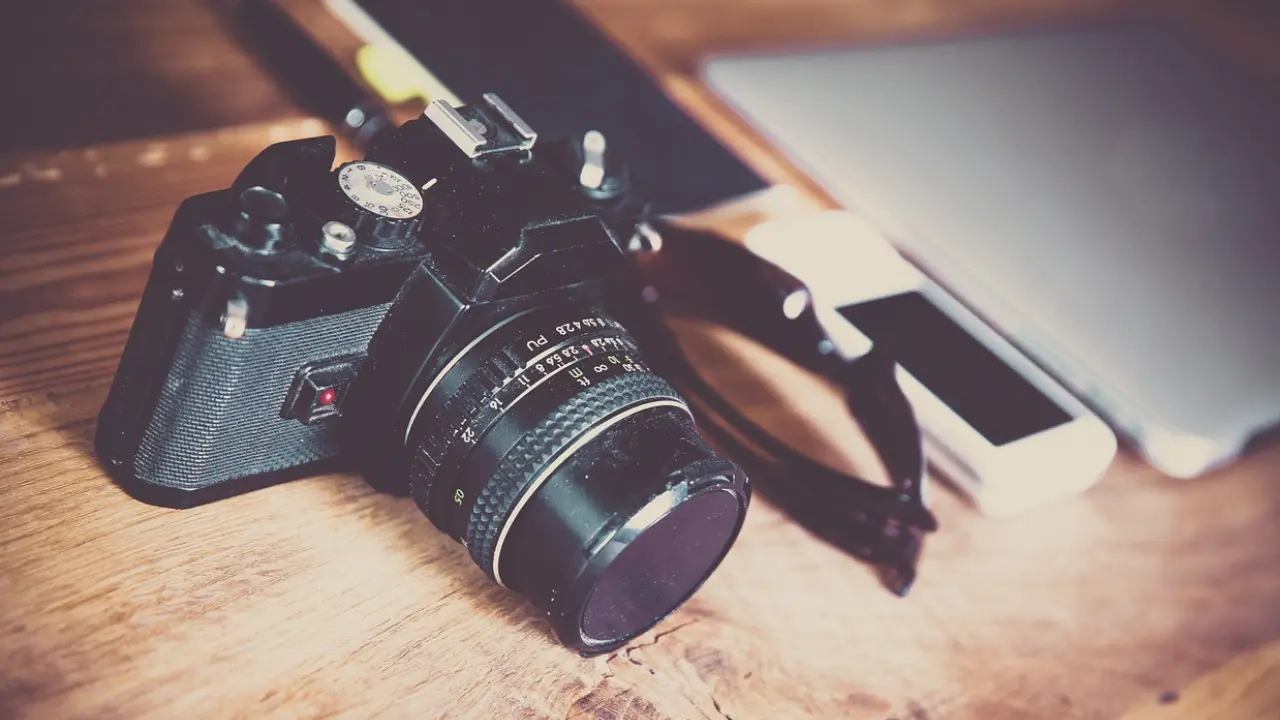Table of Contents

What is the concept of camera?
The concept of a camera capture an image revolves around the idea of capturing and preserving visual images or footage, allowing individuals to document moments, express creativity, and share their perspectives with others.
The camera serves as a tool that enables individuals to freeze a moment in time, capturing the essence of people, objects, events, and landscapes. The concept of a camera encompasses the functionalities and principles associated with capturing visual images using optics, light-sensitive materials or sensors, and various mechanisms for control
What are 3 basic camera movements?
Camera movements play a crucial role in filmmaking, allowing directors to add depth, perspective, and emotion to their visual storytelling. Three basic camera movements commonly used in filmmaking are:
1. Pan: This movement involves the horizontal rotation of the camera on its central axis, capturing a wider view and allowing for smooth transitions between different subjects within the frame.
2. Tilt: Unlike the pan movement, a tilt involves the vertical rotation of the camera on its central axis. This movement is often used to reveal or emphasize elements in a scene, such as tall buildings or looming objects.
3. Tracking/Dolly: This movement involves physically moving the camera closer to or farther away from the subject, creating a sense of depth and following the subject’s movement.
What are the 7 basic parts of a camera?
The seven basic parts of a camera include the lens, shutter, aperture, sensor, viewfinder, body/enclosure and controls. These components work together to capture and process images, allowing photographers to create stunning photographs. The lens is responsible for capturing light and focusing it onto the sensor.
The shutter controls the duration of light exposure, while the aperture regulates the amount of light that enters the camera. The sensor captures the light and converts it into a digital image. The viewfinder provides a visual representation of the scene, helping photographers compose their shots. The camera body/enclosure houses all the components and provides structural support. Additionally, the controls on a camera allow users to adjust settings such as ISO, shutter speed, and white balance, giving them control over the final image they capture.
How a camera works step by step?
A camera is a device that uses the concepts of optics, light-sensitive materials, and image processing to collect and record images. Here is a step-by-step process of how a traditional camera capture an image:
- Light enters the camera through the lens: When you press the shutter button, the camera opens its shutter and allows light to enter through a lens.
- Light is focused onto the image sensor: The lens of the camera focuses the incoming light onto an image sensor, typically a digital or film sensor that captures and converts the light into an electrical signal.
- Conversion of light into an electrical signal: The image sensor converts the incoming light into an electrical signal by utilizing a photosensitive material such as a CMOS or CCD sensor.
- Processing the electrical signal: The camera’s internal components, including an analog-to-digital converter that transforms the analog signal into a digital format, process the electrical signal generated by the image sensor.
- Image processing: Once the signal is converted into a digital format, it goes through various image processing algorithms to enhance and optimize the captured image.
- Saving the image: After the image is processed, it is saved onto a storage medium, such as an SD card or internal memory.
- Viewing the image: The saved image can then be viewed on the camera’s LCD screen or transferred to a computer or other device for further viewing and editing.
Experiment showing how camera capture an image
Introduction:
Camera is fascinating device that capture an image by utilizing a combination of optics, electronics, and light-sensitive materials. In this experiment, we will explore the fundamental workings of a camera through a hands-on demonstration. By understanding how a camera functions, you will gain insights into the processes behind capturing and preserving moments in the form of photographs.
Materials:
- Digital camera or smartphone with a camera function
- A dark room or a well-covered space with controlled lighting
- A small object or subject to photograph
- A tripod or stable surface to keep the camera steady (optional)
- A computer or image-editing software for analysis (optional)
Procedure:
1) Familiarize yourself with the camera:
Read the camera’s user manual to understand its functions and settings.
Learn about the basic camera components, such as the lens, sensor, shutter, and controls.
2) Set up the dark room:
Choose a room with no external light sources, or cover windows and doors to block out ambient light.
Ensure that the room is large enough to move around and set up the subject and camera.
3) Set up the camera:
Mount the camera on a tripod or place it on a stable surface to minimize movement.
Adjust the camera settings to manual mode, if available, for better control over the experiment.
4) Set the focus and exposure:
Focus the camera lens on the subject by adjusting the focus ring or using autofocus.
Adjust the exposure settings (aperture, shutter speed, ISO) based on the available light conditions.
5) Capture the image:
Aim the camera towards the subject and press the shutter button to take a photo.
Ensure that the camera remains steady during the exposure to avoid blurriness.
6) Analyze the captured image:
Transfer the image to a computer or review it on the camera’s display.
Examine the image for sharpness, exposure, and any artifacts.
Experiment with different camera settings to observe their impact on the resulting image.
7) Explore post-processing (optional):
If using image-editing software, upload the image and experiment with adjustments like brightness, contrast, and color balance.
Observe how these changes affect the overall appearance and quality of the photograph.
Discussion:
- Discuss the various camera components and their roles, such as the lens focusing the light, the sensor capturing the image, and the shutter controlling the exposure time.
- Explain how the camera settings (aperture, shutter speed, ISO) influence the image quality, depth of field, and exposure.
- Highlight the importance of composition and lighting in photography.
- Emphasize the iterative nature of experimentation and the value of practice in mastering photography skills.
Conclusion:
Through this experimental demonstration, you have gained a hands-on understanding of how camera capture an image. By exploring the camera’s components and settings, capturing images, and analyzing the results, you have taken an important step towards becoming proficient in photography. Remember to keep experimenting, practicing, and honing your skills to unlock the full potential of this remarkable device.
Frequently asked questions
How camera works in mobile?
Mobile cameras have revolutionized the way we capture and share moments in our daily lives.
These devices utilize basic components such as camera lens, aperture, shutter, film (or digital sensor), and the camera body to capture images. The camera lens helps to focus the light onto the sensor, allowing for a clear and sharp image.
The aperture controls the amount of light entering the camera, determining the brightness of the image. The shutter speed determines how long the sensor is exposed to light, affecting the exposure and motion blur in the photo. The camera’s internal processing software then enhances the overall quality of the image by modifying settings like white balance, contrast, and saturation.
Additionally, to provide consumers greater flexibility and control over their photos, mobile cameras may have cutting-edge capabilities like auto-focus, picture stabilization, and different shooting modes.
Discuss mobile camera parts and functions
Mobile camera technology has witnessed incredible advancements over the years, revolutionizing the way we capture and share moments. From basic camera lens, aperture, and shutter to sophisticated image sensors and autofocus systems, modern mobile cameras encompass a range of parts and functions that contribute to capturing high-quality images.
These camera components work together seamlessly to provide users with a seamless photography experience, allowing them to capture detailed and vibrant images on their mobile devices. The camera lens is a crucial part of the mobile camera, responsible for focusing light onto the image sensor. The aperture controls the amount of light entering the camera, allowing users to adjust exposure levels.
The shutter determines the duration of exposure, ensuring that the right amount of light is captured for each shot. Additionally, mobile cameras now come equipped with advanced image sensors that enhance the overall image quality and allow for better low-light performance.
Will camera work without electricity?
When considering the functionality of a camera, one often wonders if it will still work without electricity. The answer depends on the type of camera being used. For traditional film cameras, no electricity is required for the actual capturing of images. However, electricity is typically needed for functions such as the built-in flash, autofocus, and advanced settings.
On the other hand, digital cameras do require electricity to operate. This is because light can be captured by digital cameras using image sensors, which then transform the captured light into electrical signals that can be processed and stored digitally. A power source, such as a battery or an external power supply, is required for digital cameras in order to provide the electrical energy the camera requires to function properly.
How camera works in the depths?
The development of camera technology over time has made it possible for photographers and filmmakers to produce breathtaking images even in the most difficult settings.
The intricate functioning of cameras in deep-sea environments enables the capture of stunning imagery and contributes to scientific exploration. Deep-sea cameras are designed to withstand extreme pressures and harsh conditions encountered in the depths of the ocean. Cameras used in deep-sea exploration are often mounted on remotely operated vehicles or deployed as autonomous devices.
These cameras are equipped with advanced optical and acoustical data sensors, as well as altitude-recording devices, to capture a wide range of information about the deep-sea environment. Using optical technology, deep-sea cameras capture high-resolution images and videos of the underwater environment. The cameras utilize sophisticated lens systems and image sensors to capture light in low-light conditions, compensating for the poor lighting often experienced at great depths.
Want to know how electricity works then visit:
